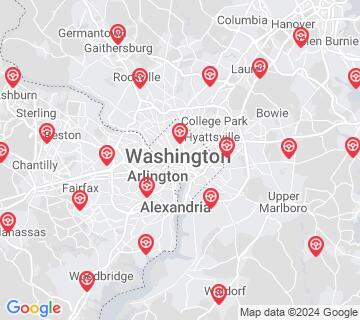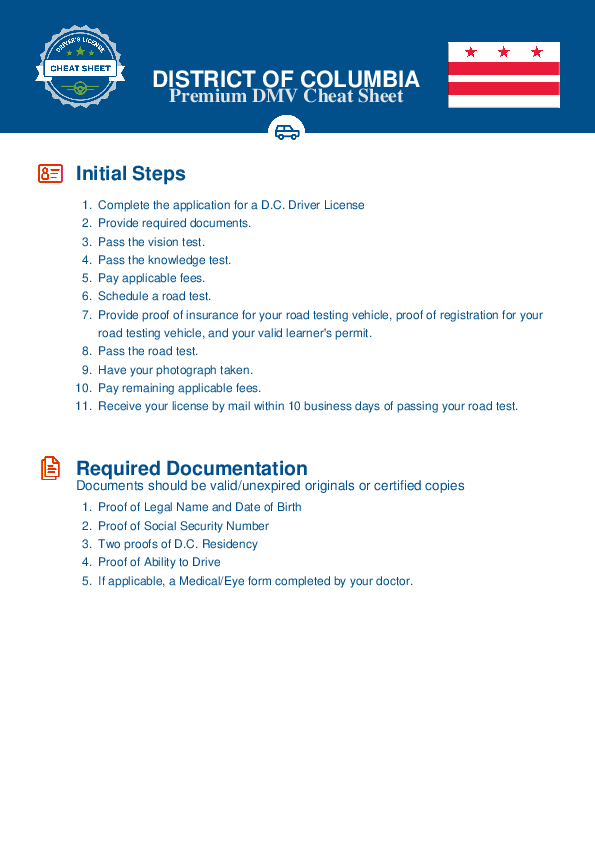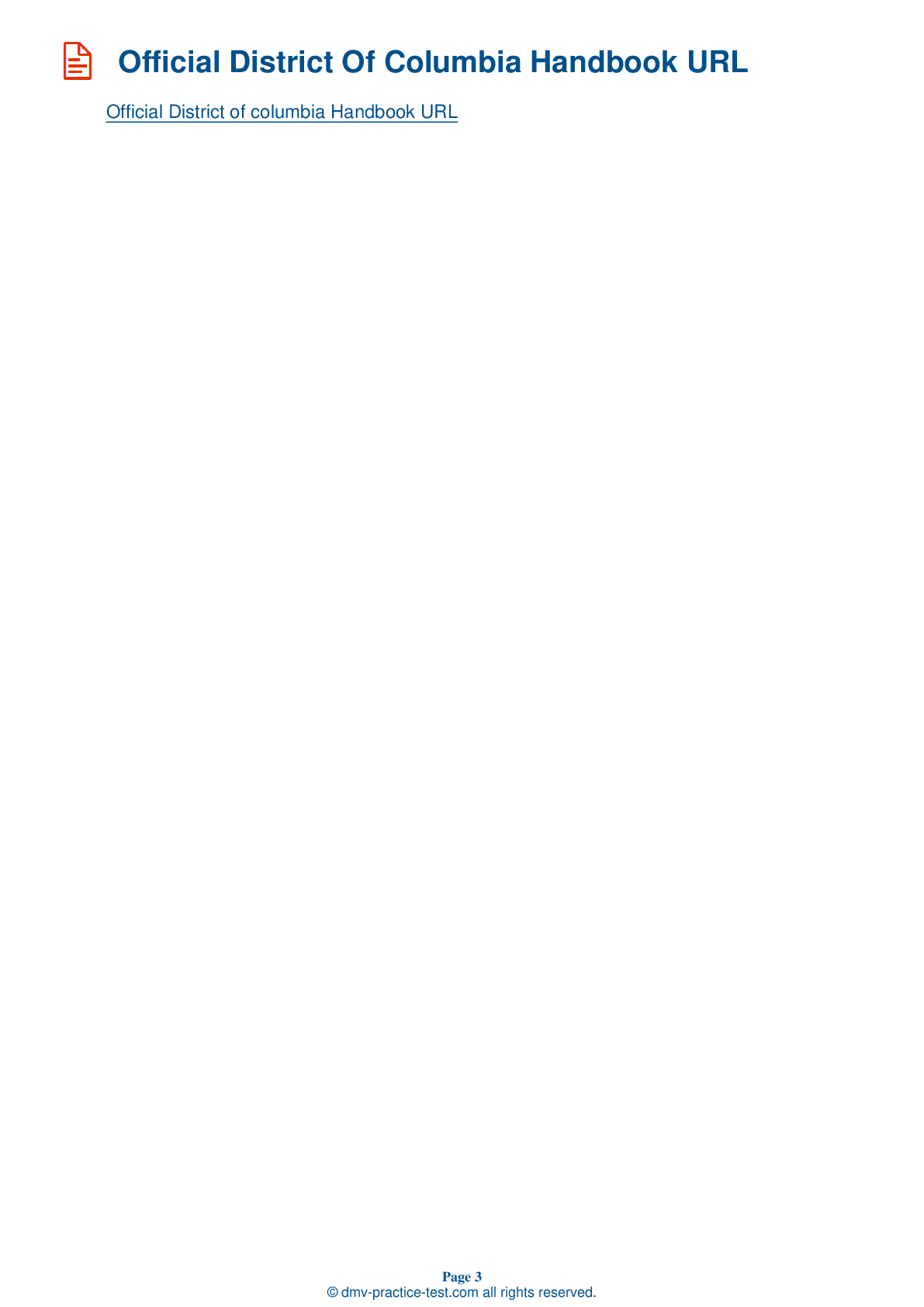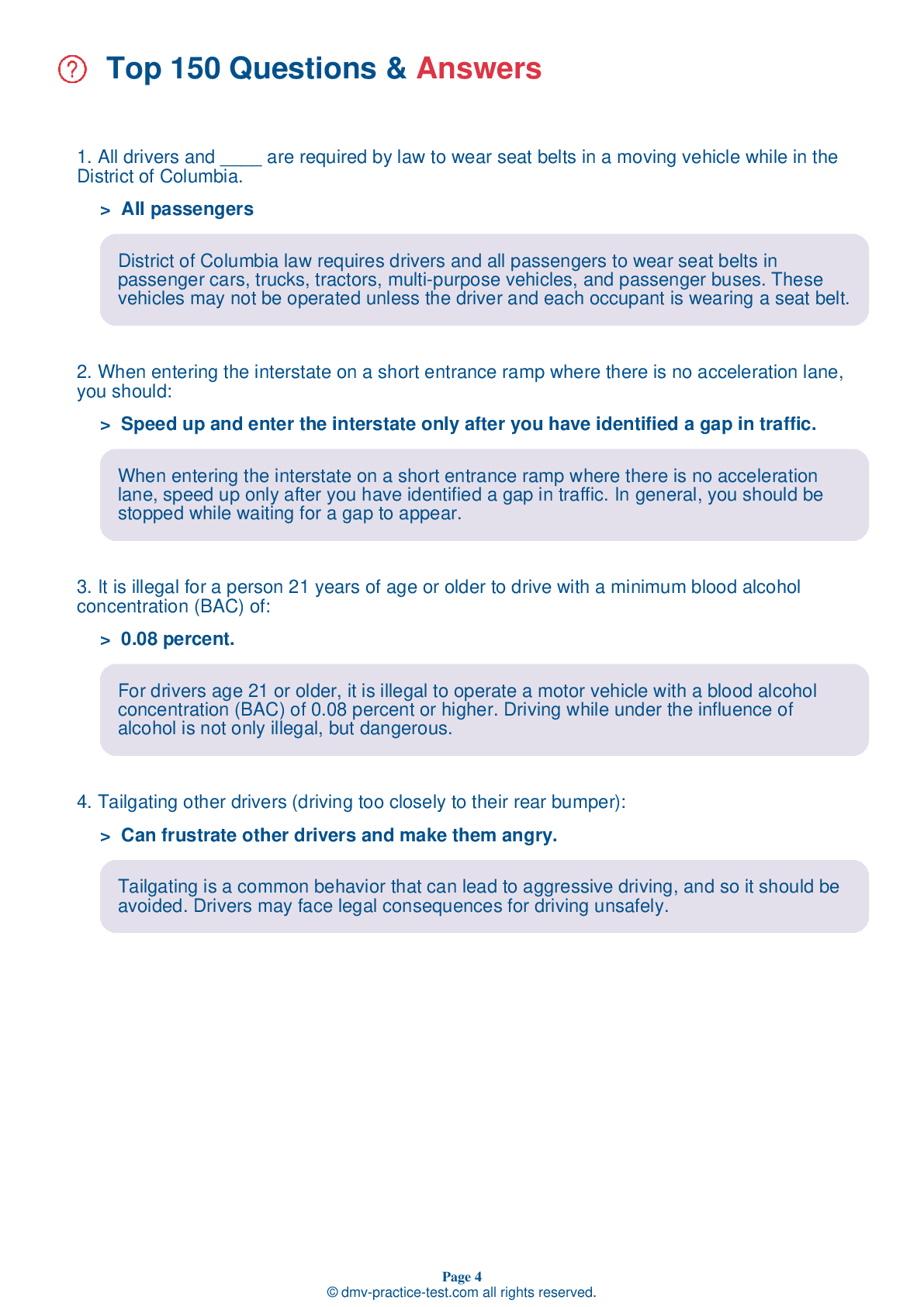FREE District Of Columbia DMV Practice Test #15 Page 3 of 3
This set of District Of Columbia DMV practise tests was been updated for January 2025. It includes questions based on the District Of Columbia Driver Handbook's most significant traffic signs and laws for 2025. Use actual questions that are very similar (often identical!) to the DMV driving permit test and driver's licence exam to study for the DMV driving permit test and driver's licence exam.
On the practise exam, each question gets a tip and explanation to help you remember the concepts. The written component of the official DMV test will include questions about traffic rules, traffic signs, and driving statutes, as well as information from the Driver Handbook.
To achieve the required passing grade, you must correctly answer 20 of the 25 questions. Take our DMV practise exam to help you prepare for your District Of Columbia instruction permit or driver's licence.
The DMV exam is available in several languages.
Using any form of testing help will result in an automatic fail, and the DMV may take further action against your driver's licence, so avoid it.
17 . When an authorized vehicle using its sirens and flashing lights approaches a vehicle, the driver should pull to the right-hand edge of the roadway and wait for the emergency vehicle to pass.
When being approached by an emergency vehicle that is using its lights and/or sirens, you must immediately pull to the right side of the road and allow it to pass.
18 . A steady yellow light at an intersection means:
A steady yellow light indicates that a steady red light will soon appear. If you are driving toward an intersection and a yellow light appears, slow down and prepare to stop. If you are already within the intersection or cannot stop safely before entering the intersection, continue through carefully.
19 . This sign indicates that:
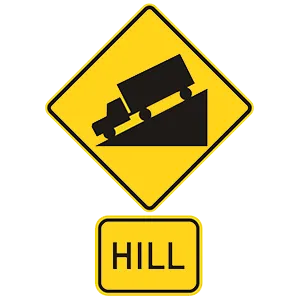
Warning signs are usually yellow with black markings. This sign warns drivers about an upcoming steep hill. Drivers should slow down and be ready to control their speed and protect their brakes from damage.
20 . A steady green traffic light at an intersection means:
A steady green traffic light indicates that the driver may continue through the intersection. The driver should yield to traffic or pedestrians already in the intersection and proceed when the intersection is clear.
21 . Guide signs are ____ signs that provide directional and mileage information to drivers.
Guide signs, sometimes known as destination signs, have a green background and provide directional and mileage information to specific destinations. They can be a helpful resource when driving in unfamiliar locations.
22 . You are involved in an accident and your vehicle is blocking traffic. You should:
After a minor collision, move your vehicle off the traveled portion of the roadway, if possible. Do not leave the scene of an accident without identifying yourself and rendering assistance.
23 . What should you do when an emergency vehicle is approaching while displaying flashing red or blue lights?
You must yield the right-of-way to all emergency vehicles using a siren, air horn, and/or flashing red, blue, or white lights. Where possible, you must pull over to the right edge of the road. If you are in an intersection, drive through the intersection before you pull over.
24 . From top to bottom, the following is the proper order for traffic lights:

